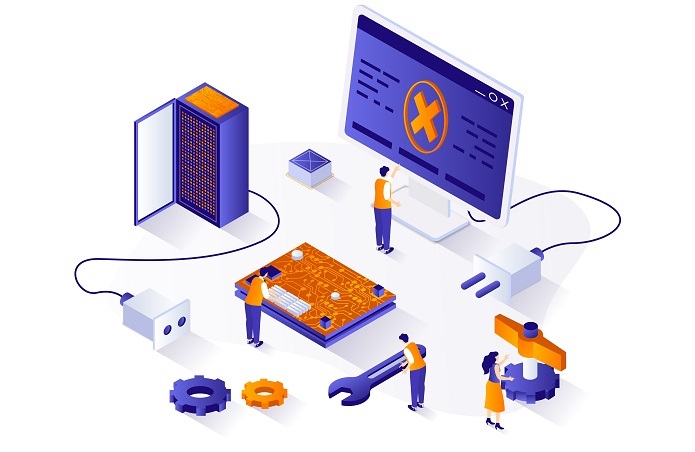
 Data Structure
Data Structure Networking
Networking RDBMS
RDBMS Operating System
Operating System Java
Java MS Excel
MS Excel iOS
iOS HTML
HTML CSS
CSS Android
Android Python
Python C Programming
C Programming C++
C++ C#
C# MongoDB
MongoDB MySQL
MySQL Javascript
Javascript PHP
PHPPhysics
Chemistry
Biology
Mathematics
English
Economics
Psychology
Social Studies
Fashion Studies
Legal Studies
- Selected Reading
- UPSC IAS Exams Notes
- Developer's Best Practices
- Questions and Answers
- Effective Resume Writing
- HR Interview Questions
- Computer Glossary
- Who is Who
What is the full form of HTX?
Introduction
Hyper Transport Expansion (HTX) is a high-speed low latency connection technique connected to various computer parts including CPUs, GPUs, and RAM. In a range of applications, encompassing servers, workstations, and embedded systems, it offers high-bandwidth data transfer rates, less energy consumption, and increased system performance.

Hyper Transport Expansion, sometimes known as HTX, is an interconnect technology that enables communication between various computer components such CPUs, memory, and input/output devices. It was developed by AMD as a development of the HyperTransport technology. A standardised interface called HTX makes it possible to link parts made by various companies.
Compared to more antiquated expansion technologies like PCI and PCI Express, it allows for higher rates and less waiting. These characteristics make HTX ideally suited for servers and high performance computing. Components can be hot-pluggable using HTX, making maintenance and upgrades simple. In order to assure reliable data transfer, it also incorporates features for mistake detection and correction.
HTX Architecture
Hyper Transport Expansion, or HTX, is a bus system designed to enhance the performance and interoperability of computer components. It connects several computer components, including CPUs, memory, and input/output devices, using HyperTransport technology.
A flexible and scalable method of connecting expansion cards and other devices to a computer is what the HTX system seeks to provide. It supports many devices on a single bus with data transfer rates of 2. gigabytes per second to 25 gigabytes per second.
The system consists of two primary components: the host bridge and the expansion bridge. The host bridge connects the HTX interface to the computer's memory and processor. Performance and flexibility-enhancing characteristics are offered by the expansion bridge. These allow numerous devices to communicate with the host bridge at once by supporting multiple HTX channels. Additionally, it supports the hot-plug and hot-swap functionalities, which permit the addition or removal of devices from the system without affecting its operation.
Advantages of HTX
HTX has several advantages some are as follows.
It provides faster data transfer between components thanks to its high bandwidth. This improves the system's overall performance.
HTX can scale to support multiple processors and devices within a single system. Up to 32 processors can be connected using HTX, making it a very expandable option.
Data transfer speeds are also fast with HTX's low latency. This quick data transfer makes it suitable for applications like video games and streaming media.
HTX is compatible with common industry standards and interfaces so it's easy to integrate into existing systems. This compatibility makes it a cost-effective upgrade option.
HTX supports hot-plugging where devices can be added or removed without shutting down the system. This makes it simple to replace or add components while the system continues running.
Error detection and correction features help make HTX a reliable connection technology. It can also use redundant pathways to improve fault tolerance.
Applications of HTX
HTX is primarily used in environments where transferring data at high speeds between different components like processors and memory is critical. HTX helps speed things up and reduce latency in several ways.

HTX is often used in server virtualization. Multiple virtual machines need to communicate with each other and the host server, and HTX allows them to do so at high speeds. This improves the whole system's performance and reduces delays.
Another common use of HTX is in high-performance computing, or HPC. It can connect multiple nodes in a cluster, enabling efficient teamwork processing and fast data sharing between nodes.
Data centers also benefit from HTX. It can be used in networking equipment like routers and switches to enable high-speed communication between different parts.
Graphics processing is another area where HTX shines. It can link graphics processing units (GPUs) and other accelerators to the rest of the system, allowing for quicker data transfer and better performance overall.
Conclusion
In brief, HTX is a high-performance interconnect innovation that provides a adaptable and reasonable alternative for expanding a system's I/O and memory capabilities. In comparison to other association advances, it features a number of benefits, such as high transmission capacity, diminished inactivity, and improved framework execution.
FAQs
Q1. Can HTX be used in server and data center environments?
Yes, HTX is frequently employed in server and data centre settings where fast, low- latency interconnects are essential for effective data processing, memory access, and I/O activities.
Q2. Are there any particular software specifications needed to use HTX?
Software compatibility with HTX, a hardware-level connection solution, relies on the particular devices and protocols being utilised. For seamless integration, it's critical to confirm that the software and device drivers support HTX.
Q3. Can HTX be utilised in server and data centre settings?
Yes, HTX is frequently employed in server and data centre settings where fast, low- latency interconnects are essential for effective data processing, memory access, and I/O activities.

